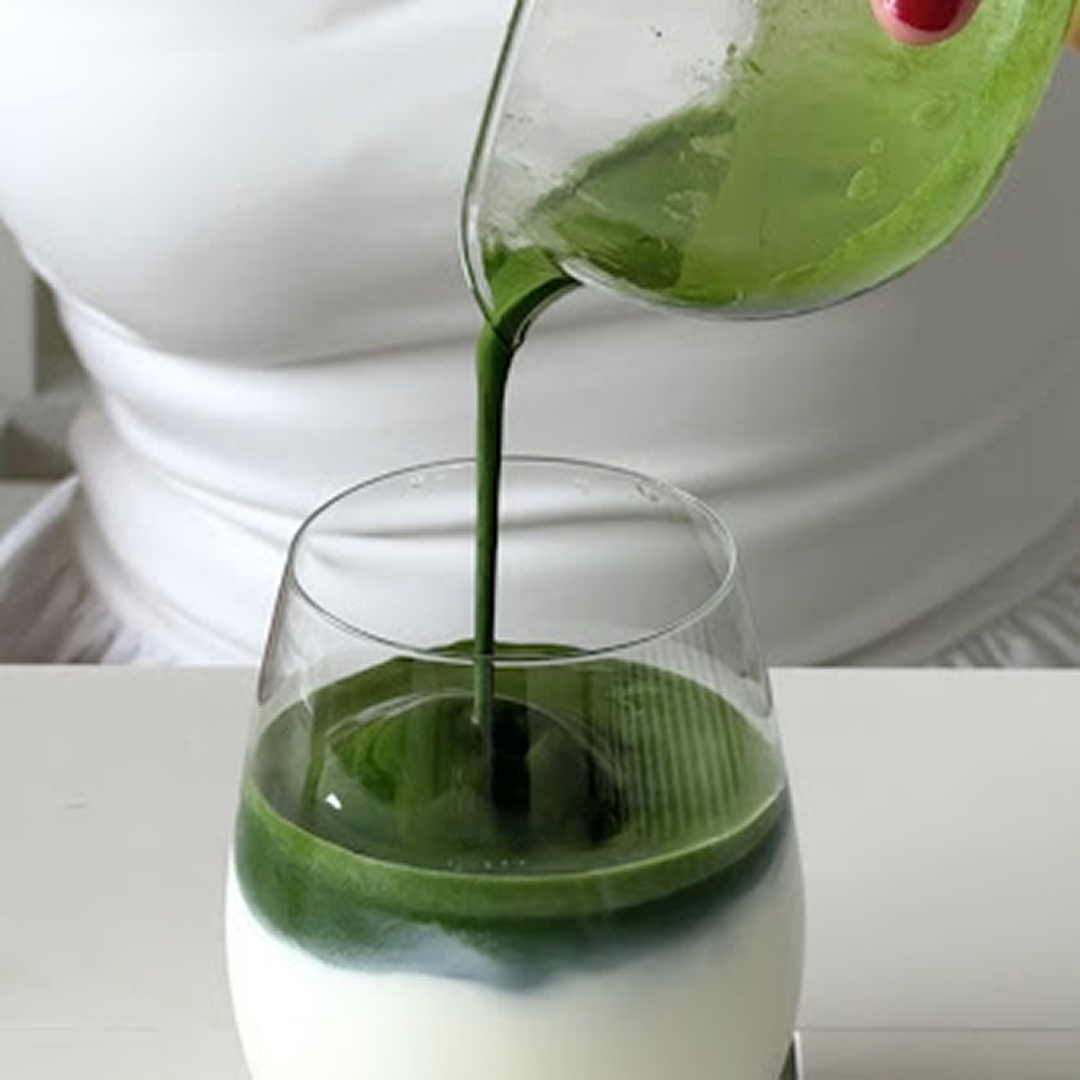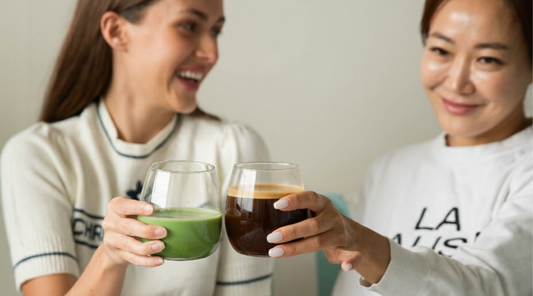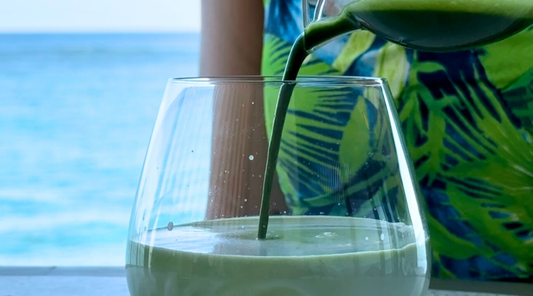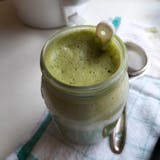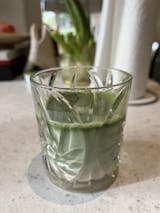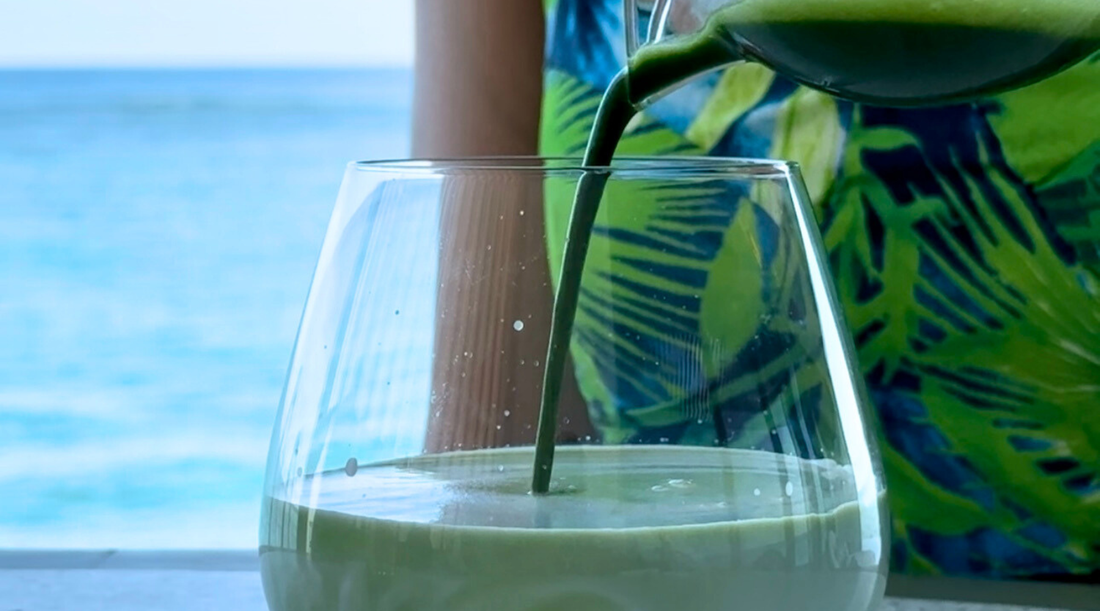
Why Does Matcha Taste Nutty?
Share
If you’ve ever whisked a bowl of matcha and caught a hint of roasted chestnut, pine nut or creamy cashew, you’ve experienced one of the most intriguing characteristics of premium Japanese tea.
The nutty, buttery undertone isn’t added or artificial. It’s a natural result of cultivar genetics, climate, shading and careful processing. In this in-depth exploration, we’ll uncover why some matcha develops this mellow richness, how to identify it when tasting, and ways to highlight that soft, nut-like sweetness in your own preparation ritual.
At Maison Koko, we’re fascinated by the sensory subtleties of matcha. Each bowl reveals new layers, and that gentle nutty whisper is often a sign of exceptional craftsmanship.
The Science Behind Matcha’s Nutty Undertone
Unlike roasted teas such as hojicha, matcha is never exposed to direct heat that would typically create toasty aromas. Yet some matcha displays a soft, nutty finish that feels naturally buttery and sweet. This delicate nuance arises from the transformation of amino acids and lipids during steaming and drying.
According to research published by the World Green Tea Association, when tea leaves are shaded before harvest, the concentration of amino acids such as L-theanine and glutamic acid increases significantly. During drying, these compounds interact with volatile lipids, creating warm, nut-like aromatic molecules.
In premium ceremonial matcha, this subtle transformation enhances both umami and creaminess, producing a rounded flavour that lingers gently on the palate. It’s a hallmark of balance, neither grassy nor roasted, but perfectly smooth.
Amino Acids, Lipids and Aroma Compounds
The foundation of matcha’s nutty complexity lies in its biochemical makeup. Shading the tea plant from sunlight for two to four weeks before harvest slows photosynthesis, allowing nitrogen compounds to accumulate.
These nitrogen-based amino acids, especially L-theanine, contribute to sweetness and depth. Meanwhile, the leaf’s natural lipids, primarily linolenic and linoleic acids undergo subtle oxidation during drying, releasing soft aromatic aldehydes and lactones reminiscent of nuts, cream and white chocolate.
A study by the National Agriculture and Food Research Organisation of Japan (NARO) notes that these aromatic molecules are more pronounced in cultivars such as Okumidori and Saemidori, both known for producing teas with creamy, nut-like finishes. When stone-ground into matcha, the aroma compounds remain trapped in the fine powder, released only when whisked into hot water.
Cultivar Influence and Regional Expression
Every cultivar expresses flavour differently, and understanding them is essential to appreciating the nutty side of matcha. Okumidori often produces a deeper, chestnut-like aroma, while Saemidori leans toward delicate sweetness and a silky mouthfeel. Asahi and Samidori, cultivars used in Uji and Yame regions, reveal layered umami with faint hazelnut or sesame undertones.
Yame teas in particular are famous for their mellow, buttery texture, shaped by the area’s misty basins and slow leaf growth. This gentle environment enriches amino acid content and enhances the nutty smoothness prized by tea masters.
Climate and the Role of Terroir
Just as wine reflects its soil, matcha mirrors its terroir. The mountainous basins of Uji, Yame and Fukuoka are naturally blanketed in mist, filtering sunlight and stabilising temperature. This atmospheric shading encourages slow, steady leaf development, resulting in high concentrations of chlorophyll and amino acids. The combination of humid mornings, cool nights, and mineral-rich volcanic soil fosters the perfect environment for soft, nutty aromatics to develop.
Matcha from these cooler regions often exhibits lower bitterness and higher sweetness, a balance that accentuates the creamy, chestnut-like depth associated with premium teas.
Traditional Drying and Grinding Techniques
After harvest, tencha leaves are steamed to halt oxidation, then dried using gentle air or far-infrared heat. This slow drying process is key to maintaining the nutty aromatic profile. Excessive heat would destroy volatile compounds, while too little would leave moisture that dulls flavour.
Once perfectly dried, the leaves are stone-ground into an ultra-fine powder. Stone-grinding minimises heat friction and preserves the soft fatty acids responsible for that creamy, nutty sensation.
Tasting and Sensory Exploration
When evaluating matcha for nutty notes, focus on the aroma, texture and aftertaste. Before whisking, inhale the dry powder high-grade matcha with nutty tendencies often smells faintly of pine nuts, sweet hay or white chocolate.
Upon sipping, the texture should feel velvety and round, coating the palate without bitterness. The aftertaste lingers softly, suggesting roasted nuts or creamy avocado rather than seaweed or grass.
Warm your tea bowl slightly before whisking. Gentle heat releases aromatic compounds trapped in the powder, amplifying those buttery tones. For comparison, try different cultivars side by side. The contrast between grassy Okumidori and nutty Saemidori can be surprisingly vivid.

How to Enhance the Nutty Flavour
For those who wish to highlight matcha’s natural nuttiness, small adjustments in preparation make all the difference.
- Water temperature: Aim for 70–75°C. Hotter water can accentuate bitterness and mask sweetness.
- Whisking: Use a chasen (bamboo whisk) to blend briskly yet softly; vigorous whisking incorporates too much air, muting creamy texture.
- Milk pairing: For matcha lattes, oat, macadamia, or cashew milk beautifully complement the tea’s nutty depth.
- Storage: Keep matcha in an airtight, opaque container at 3–5°C.
By handling matcha with care, you preserve not only its colour and freshness but also those subtle aromatic layers that make it so captivating.
Health and Wellbeing Benefits
Beyond flavour, nutty matcha is nutritionally dense. The same compounds that produce its smooth taste — amino acids, polyphenols and chlorophyll — also deliver potent antioxidant and anti-inflammatory effects.
According to Healthline’s guide to matcha nutrition, these nutrients help stabilise energy, improve focus and support healthy skin.
The balance of L-theanine and caffeine provides calm alertness rather than a sharp caffeine spike, explaining why monks historically consumed matcha during long meditation sessions.
Choosing Authentic Nutty Matcha
Authentic Japanese matcha lists its origin, cultivar and shading period. Look for teas from Uji or Yame that clearly specify their harvest and milling method. Be cautious of products labelled “ceremonial-style” without proof of regional certification.
At Maison Koko, our matcha is sourced directly from exclusive heritage farms in Yame and Uji, where traditional hand-shading and stone-milling methods preserve that signature nutty sweetness.
Explore our full ceremonial collection here.
Glossary
- Umami (旨味): Savoury depth enhancing sweetness and body.
- Tencha (碾茶): Shade-grown leaf used to produce matcha.
- Usucha (薄茶): Thin, frothy matcha preparation.
- Koicha (濃茶): Thick, syrupy matcha preparation.
- Chasen (茶筅): Bamboo whisk for frothing matcha.
- Cultivar: Tea plant variety bred for specific flavour and growth traits.
FAQs
1. Why does some matcha taste nuttier than others?
It depends on the cultivar, region and drying process. Certain varieties naturally produce more aromatic compounds that mimic roasted nuts.
2. Does nutty matcha mean it’s roasted?
No. The nutty note forms naturally from amino acid and lipid reactions during gentle drying, not from roasting.
3. Which milk pairs best with nutty matcha?
Oat, macadamia or cashew milk enhance its natural sweetness without overpowering its flavour.
4. Can I find nutty matcha in blends?
Yes. Many premium blenders mix cultivars to balance grassy freshness with soft nutty undertones.
Final Thoughts
The nutty charm of matcha isn’t an accident; it’s the culmination of careful shading, precise drying and masterful grinding. It’s a sensory reflection of Japanese craftsmanship at its finest. That whisper of chestnut or cashew, lingering on your tongue, reveals the tea’s quiet complexity and depth.
Whether you’re whisking a bowl traditionally, crafting a latte or exploring regional styles, take a moment to notice that subtle nuttiness. It’s a gentle reminder of how delicate and intricate true matcha can be.
